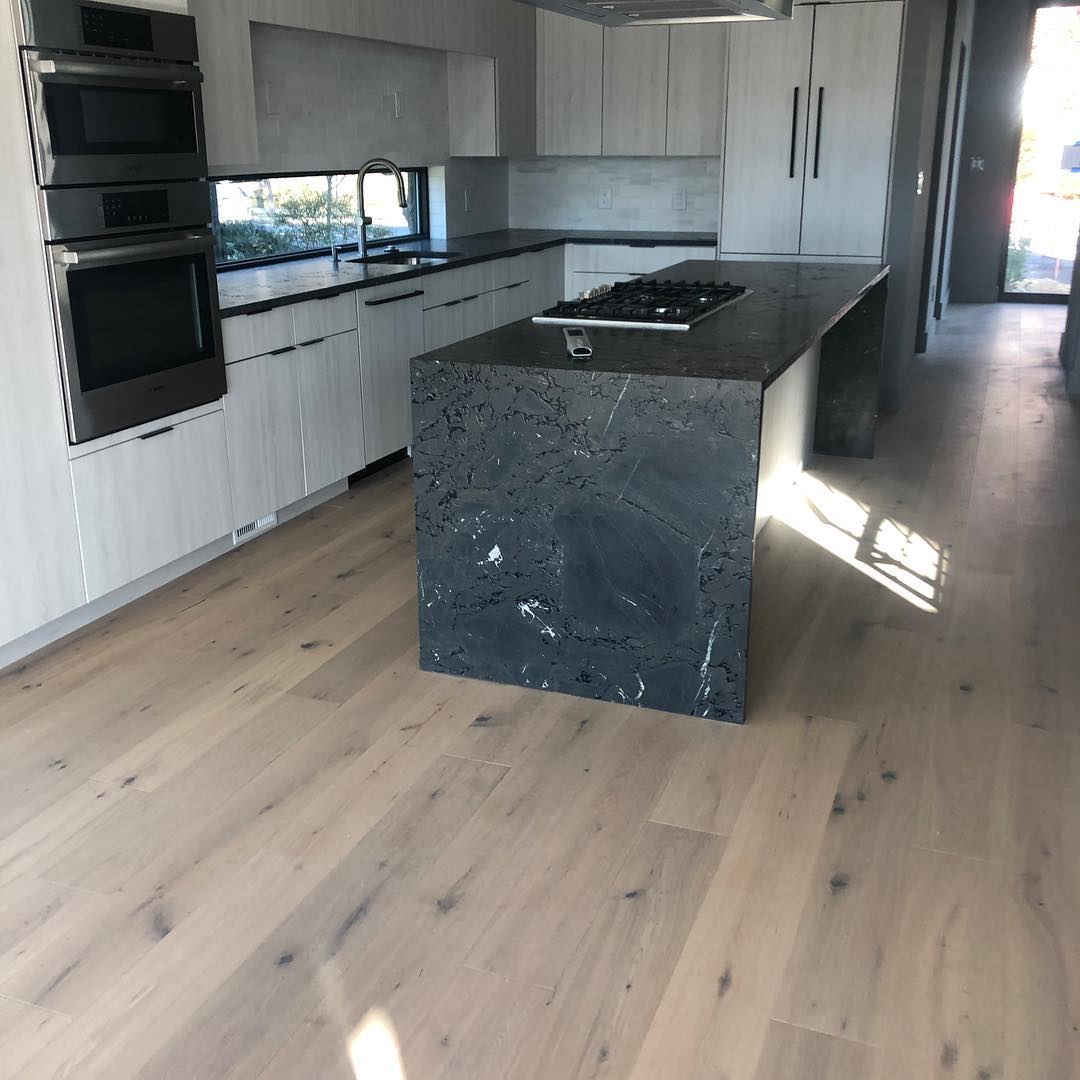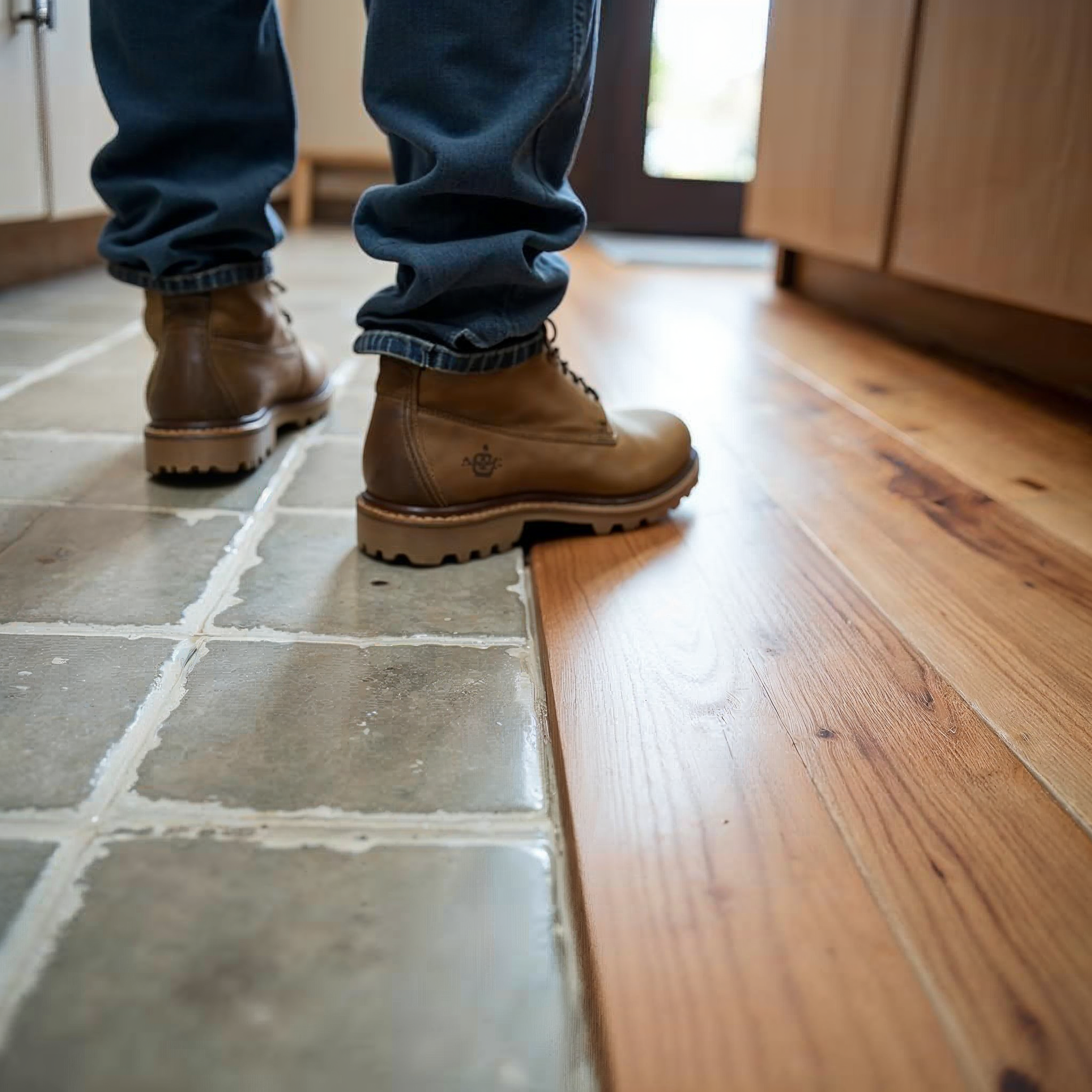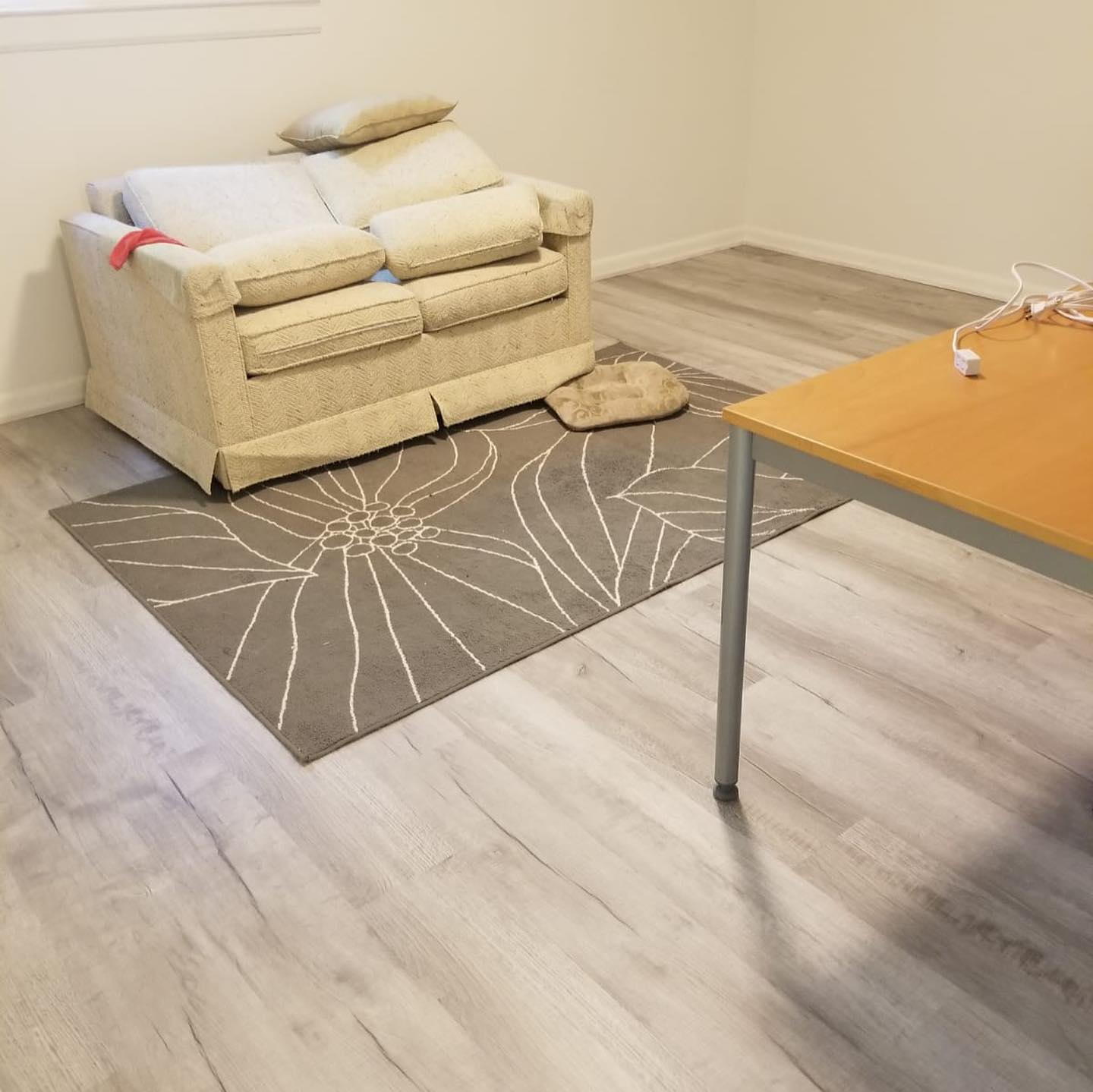Choosing the Right Luxury Vinyl Plank Flooring for Your Home
Your Ultimate Guide to Choosing Luxury Vinyl Plank Flooring: Tips from the Pros
Luxury vinyl plank flooring, or LVP, has become a popular choice among homeowners, DIY enthusiasts, and interior designers for its versatility and stylish appeal. As a trusted advisor in home decor, we’re here to guide you through the process of selecting the perfect LVP for your space. With its reputation for being a durable flooring option that stands up to high-traffic areas, LVP offers both aesthetic charm and practical benefits. In this ultimate guide, we’ll share tips from the pros on how to choose the right luxury vinyl plank flooring for your home, ensuring you feel confident and reassured in your decision. Let’s dive into the world of LVP and discover why it might be the perfect fit for your next flooring project!
Understanding Luxury Vinyl Plank Flooring
What Is LVP?
Luxury Vinyl Plank (LVP) flooring is a modern flooring solution that combines durability, aesthetics, and affordability. It’s a synthetic flooring material designed to mimic the look of natural wood while offering superior performance. LVP is composed of multiple layers, including a wear layer, a printed design layer, a core layer, and a backing layer. This construction makes it resistant to scratches, dents, and moisture, making it ideal for high-traffic areas and rooms prone to spills. LVP comes in a wide variety of styles, colors, and textures, allowing homeowners to achieve the look of hardwood without the associated maintenance and cost. Its ease of installation, often featuring click-lock or glue-down systems, has made it a favorite among DIY enthusiasts and professional installers alike.

Benefits of Luxury Vinyl Plank
Luxury Vinyl Plank flooring offers numerous advantages that make it a top choice for homeowners. First and foremost, it’s highly durable and can withstand heavy foot traffic, making it ideal for busy households. LVP is also water-resistant, which means it can be installed in moisture-prone areas like bathrooms and kitchens. Its easy maintenance is another significant benefit – a simple sweep and occasional mop is all it takes to keep it looking pristine. LVP is also more comfortable underfoot and warmer than ceramic tile, adding to its appeal. Cost-effectiveness is another factor, as LVP provides the look of hardwood at a fraction of the price. Lastly, the wide variety of styles and colors available ensures that there’s an option to suit every taste and decor scheme.

Common Misconceptions About LVP
Despite its popularity, Luxury Vinyl Plank flooring is subject to several misconceptions. One common myth is that LVP looks “fake” or cheap. In reality, modern manufacturing techniques produce LVP with incredibly realistic wood-like textures and patterns. Another misconception is that LVP is harmful to the environment. While it’s true that LVP is not biodegradable, many manufacturers now use recycled materials and offer recycling programs. Some people believe LVP can’t be repaired if damaged, but individual planks can often be replaced without disturbing the entire floor. There’s also a notion that LVP decreases home value, but well-chosen, quality LVP can actually enhance a home’s appeal to potential buyers. Lastly, the idea that LVP is only suitable for basements or rental properties is outdated; it’s now a popular choice for high-end homes and commercial spaces alike.

Key Features to Consider
Durability for High-Traffic Areas
When choosing luxury vinyl plank flooring for high-traffic areas, durability is paramount. Look for LVP with a thick wear layer, typically measured in mils. A wear layer of 20 mils or more is ideal for busy households or commercial spaces. This protective top coat resists scratches, scuffs, and stains, ensuring your floors maintain their appearance even under heavy use. Additionally, consider the overall thickness of the planks. Thicker planks, around 5-8mm, offer better stability and durability. Many high-quality LVP products also feature enhanced surface treatments that provide extra protection against daily wear and tear. Remember, investing in durable LVP for high-traffic areas can save you money in the long run by reducing the need for frequent replacements or repairs.

Style and Design Options
Luxury Vinyl Plank flooring offers an extensive array of style and design options to suit any aesthetic preference. From rustic oak to sleek walnut, LVP replicates a wide variety of wood species with remarkable accuracy. The planks come in various widths and lengths, allowing you to create different visual effects – wider planks can make a room feel more spacious, while mixed-width installations add visual interest. Color options range from light, airy tones to rich, dark hues, and even include trendy gray and whitewashed finishes. Many LVP products also feature realistic wood grain textures and beveled edges for added authenticity. Some manufacturers offer unique patterns like herringbone or chevron for those seeking a more distinctive look. With such diverse options, you can easily find LVP that complements your home’s decor and reflects your personal style.

Installation Techniques
When considering LVP flooring, it’s crucial to understand the various installation techniques available. The most popular method is the click-lock or floating floor system, where planks snap together without adhesive, making it ideal for DIY projects. This method allows for easy installation over existing floors and quick replacement of damaged planks. Another option is glue-down installation, which provides a more permanent and stable floor, particularly suitable for areas with heavy foot traffic or moisture concerns. Some LVP products come with a peel-and-stick backing, offering a simple installation process for those comfortable with precise measurements and cuts. For a more traditional look, some homeowners opt for LVP that can be nailed down. Each technique has its pros and cons, so consider factors like subfloor condition, room usage, and your DIY skill level when making your choice.

Comparing LVP with Other Flooring
LVP vs. Hardwood
When comparing Luxury Vinyl Plank to hardwood flooring, both options have their merits. Hardwood offers timeless beauty and can increase home value, but it’s more susceptible to scratches, dents, and water damage. LVP, on the other hand, provides excellent durability and water resistance at a lower cost. While hardwood can be refinished multiple times, LVP typically needs replacement when worn. However, LVP installation is generally quicker and easier than hardwood. In terms of maintenance, LVP requires less upkeep, needing only regular sweeping and occasional mopping, while hardwood may need periodic refinishing and special cleaning products. LVP also offers more design versatility, mimicking various wood species and colors. While hardwood provides a natural, warm feel underfoot, modern LVP comes close to replicating this sensation. Ultimately, the choice depends on your budget, lifestyle, and aesthetic preferences.

LVP vs. Laminate
When comparing Luxury Vinyl Plank to laminate flooring, both offer affordable alternatives to hardwood. LVP has a clear advantage in moisture resistance, making it suitable for bathrooms and kitchens where laminate may warp. LVP is also generally more comfortable underfoot and quieter to walk on. In terms of durability, high-quality LVP often outperforms laminate, especially in scratch and dent resistance. However, laminate can be a bit more affordable and may offer a wider range of design options, including stone and tile looks. Both are relatively easy to install, though LVP’s flexibility can make it easier to work with in some situations. When it comes to maintenance, both are low-maintenance options, but LVP’s water resistance makes it easier to clean. While both can look convincingly like wood, LVP often provides a more realistic texture and appearance.

LVP vs. Tile
When comparing Luxury Vinyl Plank to tile flooring, each option has distinct advantages. LVP offers a warmer, more comfortable surface underfoot, which is particularly noticeable in colder climates. It’s also quieter to walk on and more forgiving if you drop items. LVP installation is generally quicker and easier than tile, often making it a more cost-effective choice. However, tile excels in durability and longevity, potentially lasting for decades with proper care. Tile also offers unique design possibilities, including intricate patterns and custom layouts. While both are water-resistant, tile is completely waterproof, making it ideal for wet areas. LVP provides more design flexibility in wood-look options, while tile is superior for stone and ceramic aesthetics. Maintenance-wise, LVP is easier to clean daily, but tile can handle more aggressive cleaning methods when needed.

Tips from the Pros
Choosing the Right LVP for Your Home Decor
When selecting LVP for your home, consider your overall decor style. For traditional interiors, opt for classic wood looks like oak or walnut in warm, rich tones. Modern spaces benefit from sleek, wide planks in gray or whitewashed finishes. If you have an eclectic style, consider unique patterns like herringbone or mixed-width planks. Pay attention to the room’s lighting – darker LVP can make a space feel cozy, while lighter tones can open up smaller rooms. Don’t forget to factor in your furniture and wall colors. Contrast can create visual interest, but ensure the flooring complements your existing decor. It’s also wise to consider the long-term appeal of your choice. While trendy options can be tempting, classic styles tend to have more staying power. Lastly, always request samples to see how the LVP looks in your space under different lighting conditions.

Maintenance and Care Tips
Proper maintenance is key to preserving the beauty and longevity of your LVP flooring. Regular sweeping or vacuuming with a soft brush attachment will prevent dirt and debris from scratching the surface. For deeper cleaning, use a damp mop with a pH-neutral cleaner specifically designed for LVP. Avoid harsh chemicals or abrasive tools that can damage the wear layer. Clean up spills promptly to prevent staining or seepage between planks. Use felt pads under furniture legs to prevent scratches when moving items. In high-traffic areas, consider using area rugs to protect the flooring, but ensure the rug backing is non-abrasive and breathable. Maintain a consistent indoor temperature and humidity level to prevent expansion and contraction of the planks. If a plank becomes damaged, consult a professional for replacement to ensure the integrity of the entire floor is maintained.

Real-Life Testimonials and Success Stories
Many homeowners have found success with LVP flooring, praising its durability and aesthetic appeal. Sarah, a mother of three, shared, “After installing LVP in our living room, it’s withstood everything from spilled juice to dog claws without a scratch.” John, a DIY enthusiast, noted, “I installed LVP throughout my home in just a weekend. The click-lock system made it surprisingly easy.” Designer Lisa commented, “My clients are always amazed at how realistic LVP looks. It’s been a game-changer for high-end renovations on a budget.” Restaurant owner Mike reported, “We switched to LVP in our dining area. It’s been two years of heavy foot traffic, and it still looks brand new.” These real-life experiences highlight LVP’s versatility across various settings and its ability to meet diverse needs, from busy family homes to high-traffic commercial spaces.

Making the Purchase
Budgeting for Luxury Vinyl Plank
When budgeting for LVP flooring, consider more than just the cost per square foot. While LVP ranges from $2 to $7 per square foot, factor in additional expenses like underlayment, adhesives, and installation tools if you’re DIY-ing. Professional installation typically adds $1 to $5 per square foot. Don’t forget to budget for extras like trim pieces and transitions. Higher-quality LVP with thicker wear layers may cost more upfront but can offer better long-term value. Also, consider potential savings on maintenance and longevity compared to other flooring options. Some manufacturers offer financing options, which can help spread the cost over time. Remember to get multiple quotes from different suppliers and installers to ensure you’re getting the best value. Lastly, factor in any costs for removing and disposing of your old flooring if necessary.

Where to Buy Quality LVP
Quality LVP can be purchased from various sources, each with its own advantages. Home improvement stores like Home Depot or Lowe’s offer a wide selection and the ability to see and touch samples in person. Flooring specialty stores often provide more expert advice and a broader range of high-end options. Online retailers like Wayfair or Build Direct can offer competitive pricing and convenient home delivery. However, be sure to order samples before making a large online purchase. Local flooring contractors may have access to professional-grade products not available to the general public. Some manufacturers sell directly to consumers, which can be cost-effective for large projects. Wherever you choose to buy, ensure the seller offers a solid warranty and return policy. Don’t hesitate to ask for certifications or test results to verify the product’s quality and safety standards.

Engaging Professional Installation Services
While LVP can be a DIY-friendly option, professional installation ensures a flawless finish and may be necessary to maintain warranty coverage. When hiring installers, look for licensed and insured professionals with specific experience in LVP installation. Request references and view their previous work. Obtain detailed, written quotes from multiple installers, comparing not just price but also the scope of work, including subfloor preparation and trim work. Ask about their process for handling unexpected issues like subfloor damage. Clarify the project timeline and whether they’ll move furniture or if that’s your responsibility. Ensure they’re familiar with the specific LVP product you’ve chosen, as installation methods can vary. Don’t hesitate to ask about their cleanup process and if they’ll dispose of your old flooring. Remember, the cheapest option isn’t always the best – prioritize skill and reliability to ensure a long-lasting, beautiful result.

Fill out the form below and an AG Construction representative will contact you soon.
Contact Us Today


Whether you own a home or business, we’re your single source for complete flooring installation services! Our comprehensive services include:
- Hardwood staining, sanding, refinishing, restoration, and more!
- Carpet removal and installation
- Vinyl luxury plank replacement and installation
- Vinyl tile and COREtec installation
- And more!




